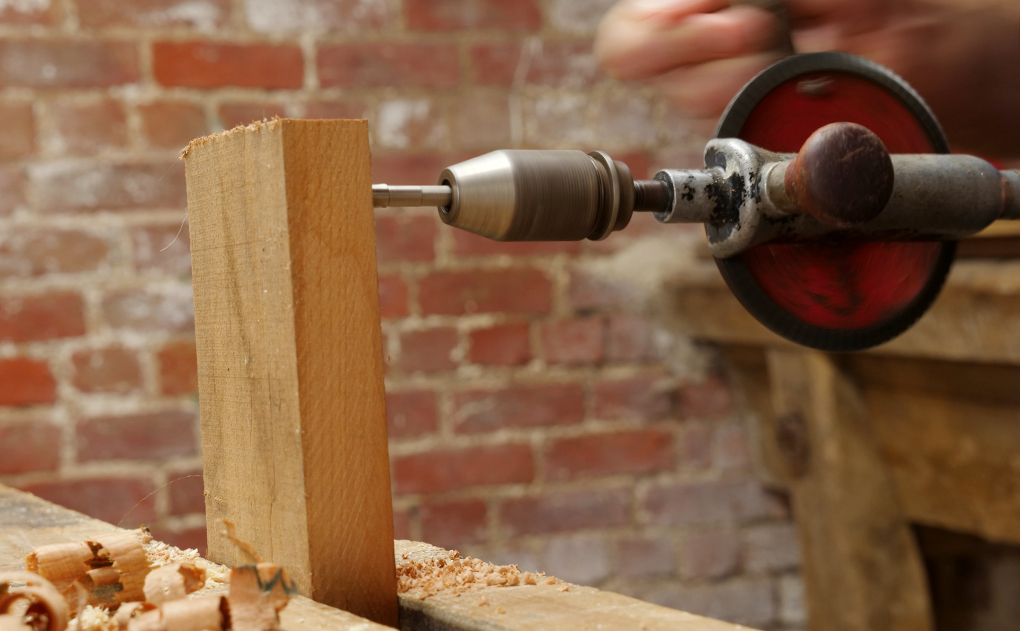 I’m always whinging about something.
I’m always whinging about something.
So the thing this blog is good for is that someone always has an answer.
And it shuts me straight up.
When I was moaning about drill bits in the marking knife post, we got plenty of suggestions for bits that you find overcome my problem.
You weren’t wrong.
We got together all the drill bits that we could from your input, and I put them to the test.
The Problem With Hand Powered Drills
My struggle here has always been with small drill bits.
Larger diameter bits, I’ve never had an issue with.
I find you can buy old augers for these, and then it’s all about being good at sharpening them.
With smaller diameter drill bits though, I tend to find you’re restricted to what’s at the shop.
For high speed cordless drills this isn’t too bad. You can often get away with a shoddy drill bit, and use the speed to whizz it through.
But the low speed in hand powered drills doesn’t give much help with this approach.
The Important Sizes
I don’t find you need a full set of bits, but there are certain diameters that I’ll use all the time.
6mm – 10mm. (1/4″ – 3/8″)
These are the sizes I’m always using for pegged joints and stuff like that.
And these commonly used bits also happen to fall on a boundary of ‘do I need to get the bit and brace out, or not’.
For the smaller of these sizes, I’d prefer to use an egg beater, but it’s always been a struggle to get drill bits that are clean cutting at low speeds.
That was until I went through your recommendations.
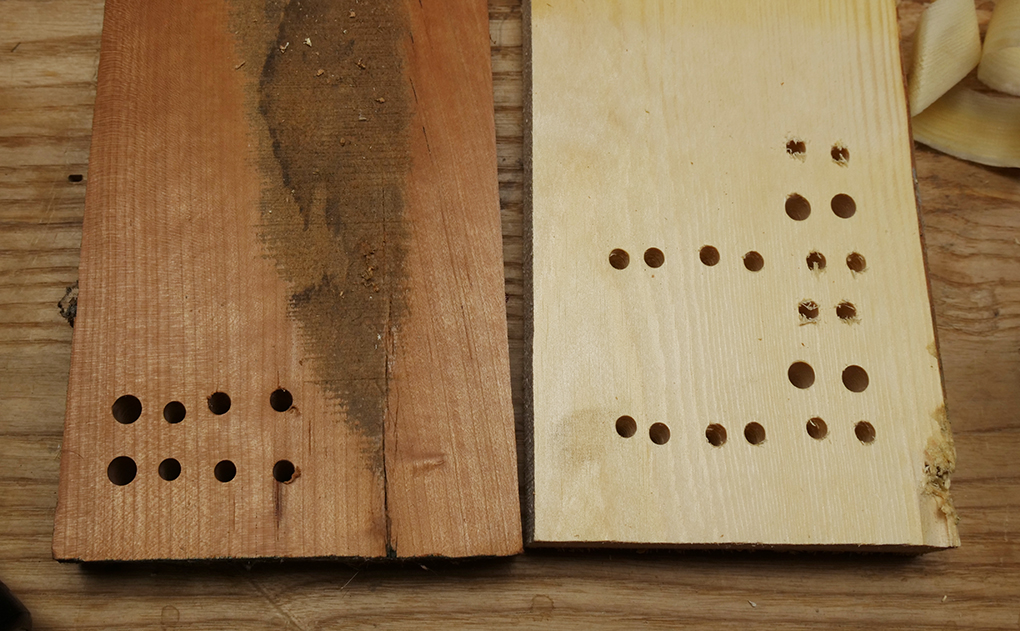
Comparing drill bits. The straggly holes are from the best of my previous drill bits. Each of the bits in this post produce wonderfully clean holes.
My Top Three Drill Bits For Hand Drills.
I tested a good handful of bits, but I’m just going to cover my favourites here.
These are the bits that I’ll be buying in the future, and have put an end to my hunt. Thank you.
A quick note – all of the drill bits were purchased by us for testing.
All bar one. The Star-M was provided by Matthew at Workshop Heaven.
Matthew read the post where I was whinging and he sent this one over free of charge. Don’t worry – it takes more than a drill bit to sway my opinion, but I wanted to be clear about that.
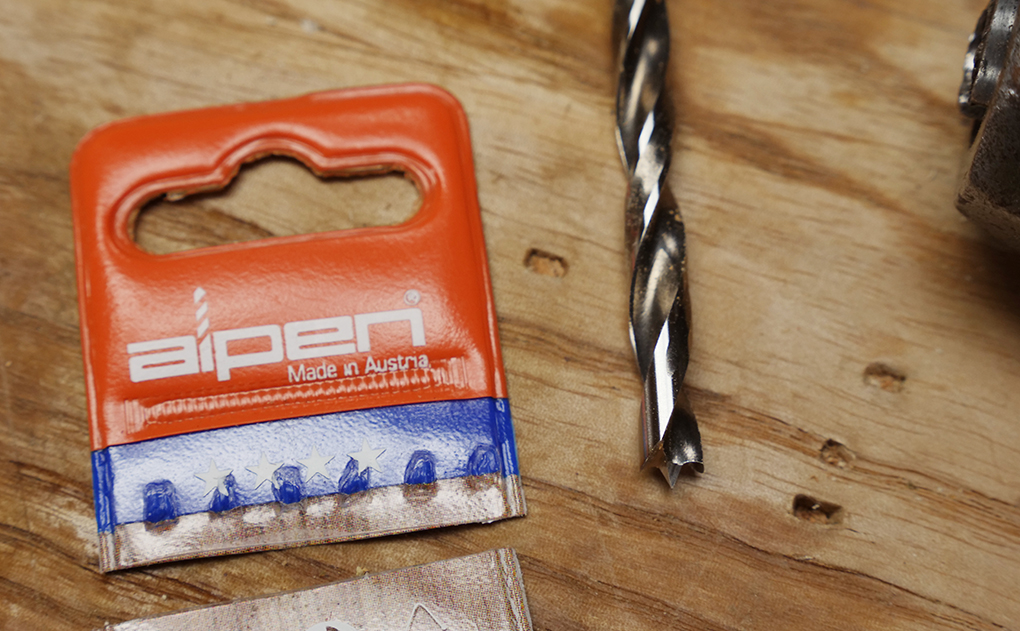 Alpen HSS Dowel Drill
Alpen HSS Dowel Drill
– Size tested 6mm
– Price paid – £4.99
– 8mm bit price – £4.99
– More info
Of the 6mm bits tested, this one came out on top.
I found it gave a beautifully clean cut, and the exit hole was amongst the best of them.
This is definitely the bit that I’d jump to first to buy again.
It also offered the best price.
It didn’t bog the drill down, which is a particular problem that you can find with slow egg beaters.
What I really liked about the Alpen was that you had to apply quite a bit of force to get it to cut, but the force needed remained the same throughout.
It didn’t to that thing where when it bites it halts the drill.
Instead it needed consistant pressure to get it through, and I like that.
It gives you a lot of control, and doesn’t feed too fast.
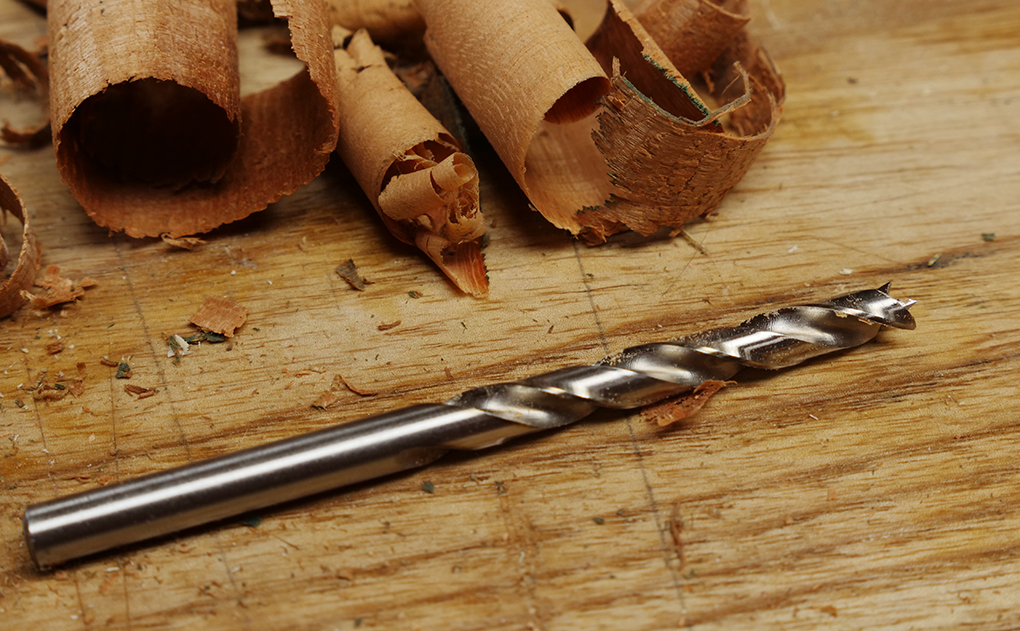
Veritas / Lee Valley HSS Lipped Brad Point Bit.
– Size tested – 6mm
– Price paid – £5.95
– 8mm bit price – £8.74
– More info
This one again created a beautifully clean hole.
It was very similar to the Alpen, where it needed a little bit of force to get the initial bite.
The only negative here, is I did find that once it bit, it did do that bogging thing.
It wasn’t enough to a stop or stall the drill, but it was notable and I was becoming a bit weary of it.
The hole itself was great, and it certainly didn’t have that common issue where a drill bit can act as a screw and won’t drill the hole out.
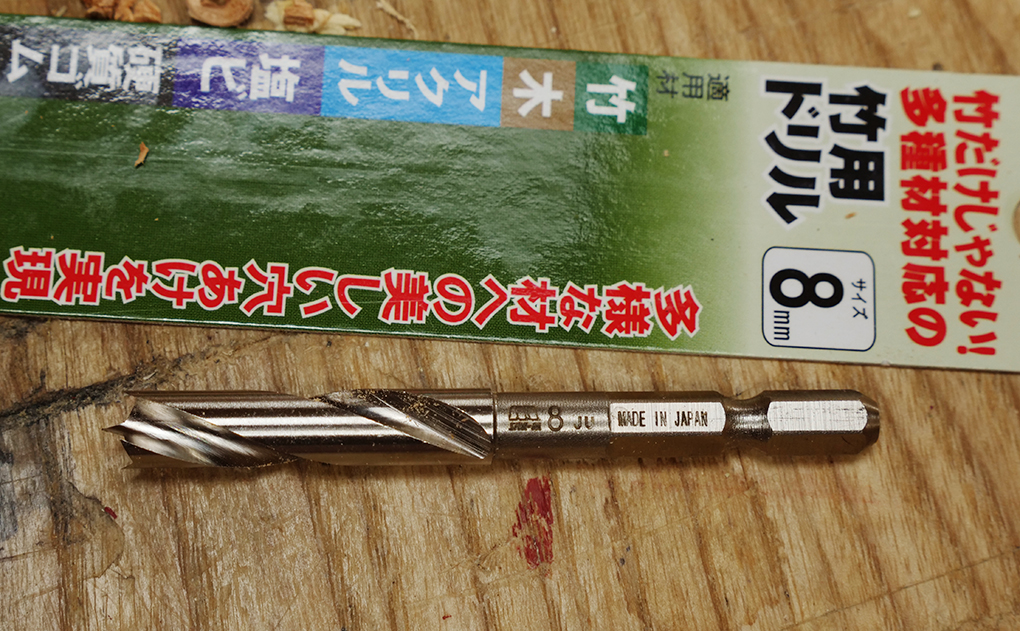
Star – M Japanese 601 Precision drill bits.
(Provided by Workshop Heaven).
– Size tested – 8mm
– List price – £10.30
– 6mm bit price – £9.40
– More info
The bit sent to us was 8mm diameter – so larger than all others tested, which were 6mm.
Something that I immediately liked was the hex shank.
This is brilliant in two ways.
Hand drill chucks can be crap, and so the hex shank stops them from slipping, and the bit will never twist.
It also meant that I could get a larger diameter bit in my chuck.
6mm is pushing the capacity of this chuck, but with the hex shank, larger diameters fit perfectly.
It’s worth noting that the Alpen above is also available with a hex shank.
Of course turning an 8mm drill bit in an egg beater drill is not always fun.
Normally 4mm is approaching the max that you would want to turn.
But this is what shocked me the most with this bit.
Turning an 8mm bit in an egg beater drill – and it took such little effort.
It was a wonderfully clean cut, and gave great self-feeding control, which required light downwards pressure.
Now I don’t want to compare this bit directly with the others.
It could be possible that the clean cutting was down to its slightly larger diameter for example.
But it was very impressive.
And whilst I’m certainly not influenced by being sent this one for free, it really was a pleasant surprise.
There were two small negatives though.
Firstly it was the most expensive, (though we often get what we pay for.)
Secondly it was quite short. I felt that could be quite limiting.
Clean Cuts At Low Speed
This is certainly my small drill bit epidemic solved. Thank you.
As a summary, any of the above bits will do you proud.
At this price range the best value bit will be highly affected by any additional shipping costs, so local availability and whether or not your have other bits to add to your basket, will be the bigger factor.
Each of them will be more expensive than your run of the mill B&Q multi pack. But they’ll cut clean and they’ll last.
If you’ve ever had a go on a milling machine, or even a spiral bit in a router and you’ve plunged a hole. These felt that nice. That wonderful clean hole, but in a slow hand drill.
(I also tested them in a cordless drill and they were superb.)
I want to note that these aren’t long term tested. Time may tell a little more.
But each was high speed steel and will keep an edge many times longer than carbon steel.
They were also tested in a variety of hardwoods and softwoods.
In fact they’ve now mingled in to daily use.
I’ll be buying a few more sizes to make up a set for my general needs.
Then I’ll look after them.
I’ll probably reserve them for show face drilling, when I’m pegging joints etc.
People are often surprised to see me using my cordless drill in videos, but I’ve always found it the best option for this size of drill bit.
But now I’ve got no excuse.
Thanks again for your recommendations.
If you’re looking for more advice on setting up with hand tools then have a read through our guide on the essential hand tools for getting started.

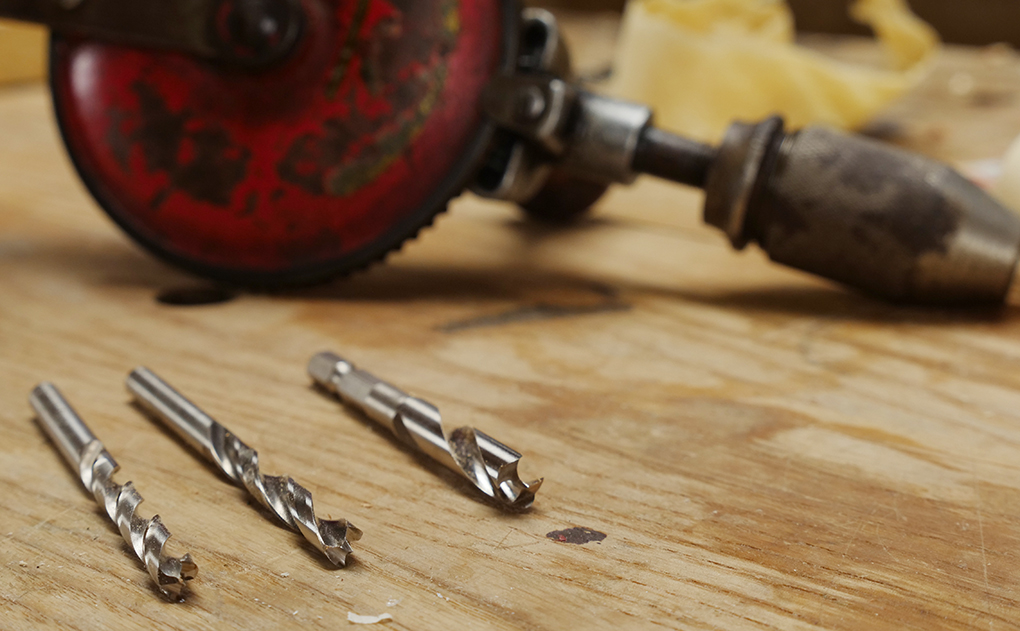
![Which Saws Are Best For Ripping Thick Stuff? [Video]](https://www.theenglishwoodworker.com/wp-content/uploads/2022/12/what-hand-saw-is-best-for-thick-rip-cuts.jpg)
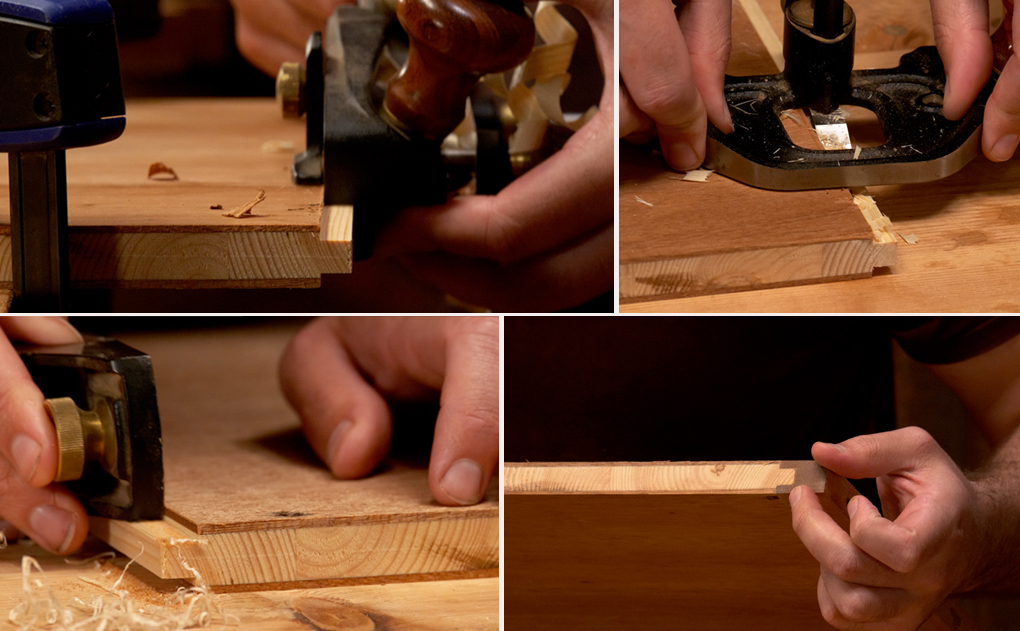
![Quick Homemade Clamps – Small & Large [with video]](https://www.theenglishwoodworker.com/wp-content/uploads/2022/08/how-to-make-your-own-woodworking-clamps.jpg)
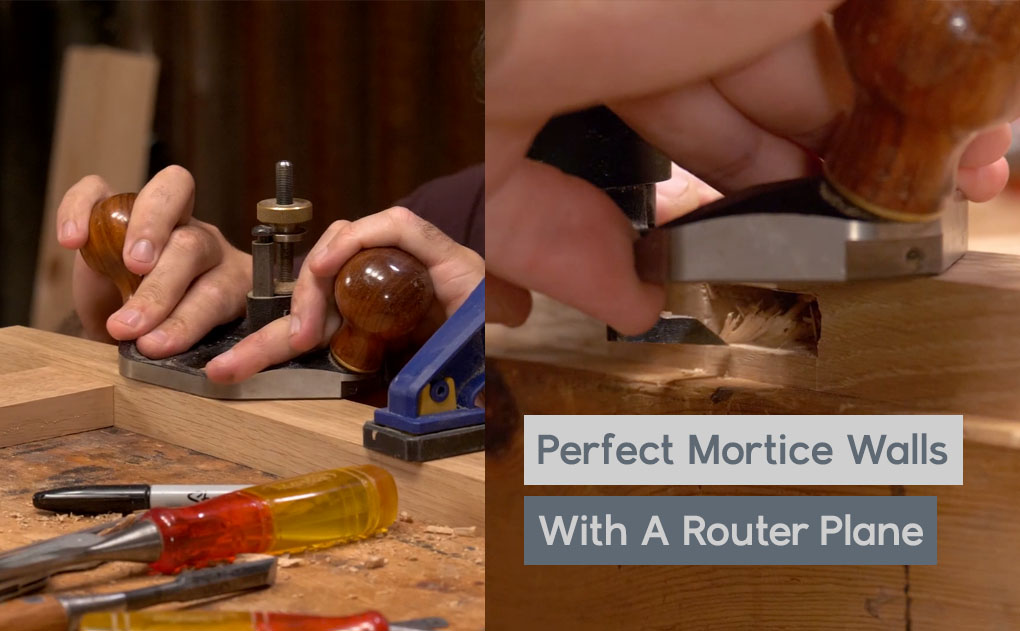
Hahaha, Never suggested anything lol….. But I do have the Veritas bits and when using hand drill, I start with a rev or two counter clock wise, it seems to alleviate the “grab” factor…
I find these bits to be quite fragile(the spurs anyway).
A few revs backwards also works well to get a clean hole with auger bits.
I must say that if I need to drill a hole with the very convenient hand crank drill I usually use my breast drill, this is because it has two easy change gearings, and also because the crank handle is a little longer is more controllable , and the chuck is more powerful, there are times when space is limited, then it has to be the small “egg beater”, but the breast drill is my first choice.
Right. I have two hand-crank drills, both Stanleys, both were my grandfather’s—I’m 72; do the math. I use the breast drill a lot. The wee one is best reserved for wee bits.
Thanks for the review, Richard.
For smaller holes I simply use HSS metal drill bits. They do fine and are far more robust than the tiny spur and lipped wooden ones which I invariably break.
For intermediate holes (5mm to say 8mm) I find might resort to a power tool and for bigger than that I’ll use augers in a bit.
I might try some of your suggestions though in that middle range.
Hi Great article, do you have any recommendations on hand drill countersink bits.
Always a fountain of knowledge. Thanks for the review and the recommendation
Useful and objective review Richard. Thanks for sharing.
While I can’t claim an exhaustive effort, I’ve been unable to find a source for the Alpen bits in the U.S. Am I missing something? The Alpen site doesn’t steer one to any vendors and does not have provisions to buy direct either.
Polly, you may find them on Amazon DE (I know they have normal HSS and Mason bits) and if sold by Amazon themselves then you can get them delivered to the US. Just use your normal Amazon login details.
You haven’t tried anything until you’ve tried cobalt brad point bits. That’s mostly what I use now unless I’m drilling through metal, yes I’ve drilled brass and other softer metals with my egg beater. It’s not super fast but it’s doable.
Salko, I know you get carbide-tipped Brad-point drill bits and cobalt M42 and M35 normal twist bits but I’ve never seen cobalt Brad-points. Where are these sold?
Hilton,
there are cobalt (Co5) alloyed brad-point drill bits from Alpen. Those Richard used are “only” HSS. I got the 5 bits set of the cobalt ones, but haven’t had enough test time to give a verdict.
There seems to be different quality levels with those, sometimes designated 3-5 stars. Sets: TM are up to 250°, PTM up to 450° (ATM are like PTM with hex shank), and PCTM (cobalt) up to 650°, and there seem to be another HSS up to 600°, but I haven’t seen this as a set and it may be a listing mistake, they seem to be the 4 star HSS/PTM. That’s what I gathered from browsing offers.
I use the Veritas bits and they’ve worked quite well, battery powered or self-powered. But I am open to trying others. I see the Alpin’s are available on Amazon in the U.S..
Great review!
I have the Veritas bits. I’ve only used them in a cordless drill but I’ve found that in pine they tend to stop cutting, give a little force and it plunges deep. They do make a very clean hole though, just tricky to control. With metal working bits they are very consistent in how fast they bore to the amount of pressure applied. The larger the drill bit the more extreme I found the issue to be.
I’m currently building a 7m by 4m workshop, entirely with hand tools for the wooden parts.
Since November I’ve drilled well over 1000 holes with my eggbeater drills. I have several set up for different tasks.
One with a 6mm bit with adjustable depth stop, one (an enclosed gearbox type) with a 5mm bit with adjustable depth stop, one with a hex holder for screwdriver bits, one brace with a hex holder for screwdriver bits.
The bits and screwdriver heads are all from B and Q. I’ve had no problems with any of them. The key is to use the correct gear and spin quickly.
I’ve used the eggbeater on a slow gear with a 6mm auger (well sharpened and waxed) for deep holes.
Why? Silence. Exercise. No cables tangling anywhere. No flat batteries.
I also cut all the wood exclusively with my Skeltons. Think about; try cutting a 5m beam with a chop saw against merely striking a line and getting on with it.
There’s no wood task that can’t be done easier with hand tools. Just get on with it.
Fair play to ya, I opted for a 4x3m workshop, modern log cabin construction. Two builders put it up in a day and a half, I’ve nearly finished painting it and I’m good to start woodworking 😀
Jim, great story! Can I ask what kind/make of eggbeaters you went for and from where? I’m looking at buying a couple for the reasons you state but no idea where to start. I do already have a garage though!
Can any of these bits be sharpened with a file? I assume they are all hardened?
I use hand tools – planes, chisels, and saws, quite a bit for mixture of enjoyment of doing so and utility these tools provide. As we all know in many cases you can do something better or faster with hand tools, or accomplish something that may be impossible or very awkward with small shop power machinery.
Though this is off topic, I’ve always wondered when this applies to hand drills. I’ve tried using egg beaters and augers, but always find myself reaching for my trusty electric drill regardless of the size hole to be drilled. In what cases is a hand-powered drill preferable in your experience?
Oh I love my dewalt drill. I have to say though that any chance I have to use my brace and bit I pull it out (when the hole is over a half inch) I love cutting the fibres with the spurs of a well sharpened auger and counting the revolutions to govern the depth. I can’t say it’s faster but it does engage me with the material as I work.
Hi Richard,
Thank you for share nice article.
I am using hand power drill but messed when drilling into hard metal. I am sure i was wrong to choose perfect size drill bits.
Do you have any recommendation for metal and stainless steel drill bits?
Regards.
HI there,
thanks for the article, great read! Although hand tools have there place, I’m more of a drill press person
That hex shank bit is a great find!
Ever use a Yankee push drill? Works well for shallow holes.
Quick too.
Richard,
can you give a recommendation on which eggbeater drill to buy? I have a hard time finding out which ones might work well, as the one I have is a bit clunky. Thanks.
– David
Hi David,
now that is a question, I’m always on the lookout for old eggbeaters that work. Luckily they’re cheap.
I’ve always found that if it’s a Stanley then it will be serviceable, but you really want to test for a smooth action, there’s nothing worse than a jittery action. And also check that the chuck works – they’re normally the first thing to go on these things. As far as new ones go, I’m not even sure if there’s any available but I’ll look in to this and if there are any I’ll look in to getting some and doing a test.
Hi Richard.
about new drills: there are Schröder drills, from here in Germany, seem to be available in the UK as well, 1/4 and 5/8 chucks, I think. Then there are the cheap-ish Am-Tech, Faithfull, Draper, Silverline (have one of these, not very good), Corvus and you can get Stanley 103 and 105s new I guess, but I don’t know how they compare to the old ones. Happens I just got a new Stanley 5002 (8mm) “bevel edged” chisel, which is more of a firmer chisel. I’m looking forward to finding out how a modern Marples splitproof turns out in a few days. But I digress.
I do have a Stanley 803 hand drill, and the problem seems to be mostly with the crank handle, which is sort of riveted and not completely fixed, so it catches on each turn. I fastened it a bit with a punch, but I may have to redo the handle fixture. I also have two 2-speed breast drills from Stanley and Flott, which are just too heavy and big for the occasional hole.
Anyway, maybe you can do a post or video on hand drill and brace technique some time.
Best regards,
David
Thank you David, yes I’ll definitely get something up on the list and get some of those new drills added to basket. Hand drills are all about rhythm and anything that affects that really makes it harder work than it has to be.
Most important and helpful article for the drill bit. Thanks for sharing the useful article.
Today I bought a Miller’s Falls no.100 push drill and no. 2 1/2 eggbeater and I noticed they both came with a set of straight flute drill bits. Maybe that is what is meant to be used?
Rereading this the thought comes to mind that a tatty old bit is always harder to use – they are such a pain to sharpen too! I love a good twist drill, but there are times when I need one hand free, so I guess I’m not giving up that cordless drill/driver anytime soon. Keep up the good work – well done that man!
Another candidate worthy of a trial is a cross spear-pointed bit intended for glass & ceramic. I have a four-fluted 1/4″ bit that drills nicely, and can be started easily at angles from 90 d to 45 d.
You mentioned that you tested the drill bits in a variety of hardwoods and softwoods. In your experience, do you find that certain types of wood are more challenging to drill with hand-powered drills, and do you have any tips for achieving clean cuts in those more difficult woods